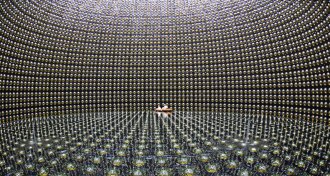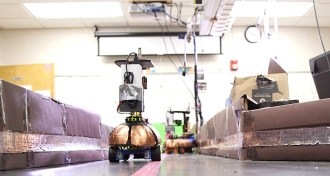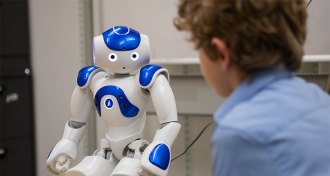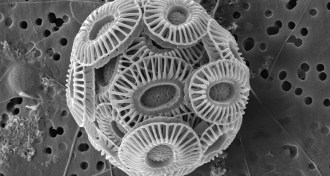Uncategorized
-
 Ecosystems
EcosystemsA freshwater, saltwater tug-of-war is eating away at the Everglades
Saltwater is winning in the Everglades as sea levels rise and years of redirecting freshwater flow to support agriculture and population growth
-
 Particle Physics
Particle PhysicsGhostly antineutrinos could help ferret out nuclear tests
Antineutrino detectors could one day help reveal stealthy nuclear blasts.
-
 Life
LifeHow salamanders can regrow nearly complete tails but lizards can’t
Differences in stem cells in the spinal cord explain the amphibians’ ability.
-
 Science & Society
Science & SocietyCheese found in an Egyptian tomb is at least 3,200 years old
Solid cheese preserved in an ancient Egyptian tomb may be the world’s oldest.
-
 Astronomy
AstronomyA galaxy 11.3 billion light-years away appears filled with dark matter
The “Cosmic Seagull,” a distant galaxy magnified by a gravitational lens, seems chock-full of dark matter, in contrast with other galaxies almost as far away.
-
 Tech
TechHere’s what robots could learn from fire ants
Fire ants’ secret to success is prioritizing efficiency over fairness. Robot teams could use that strategy to work more efficiently in tight, crowded quarters.
-
 Materials Science
Materials ScienceA filter that turns saltwater into freshwater just got an upgrade
Smoothing out a material used in desalination filters could help combat worldwide water shortages.
-
 Earth
EarthIn 1968, scientists tried taming hurricanes
For over 20 years, the U.S. government tried to subdue hurricanes through cloud seeding, with mixed results.
By Kyle Plantz -
 Life
LifeMore than 2 billion people lack safe drinking water. That number will only grow.
By 2050, half the world’s population may no longer have safe water to drink or grow food. What then?
-
 Health & Medicine
Health & MedicineCancer drugs may help the liver recover from common painkiller overdoses
Experimental anticancer drugs may help the liver recover after acetaminophen poisoning.
-
 Tech
TechChildren may be especially vulnerable to peer pressure from robots
Elementary school children often endorsed unanimous but inaccurate judgments made by small groups of robots.
By Bruce Bower -
 Oceans
OceansViruses may help phytoplankton make clouds — by tearing the algae apart
Sick phytoplankton shed their calcium carbonate plates more easily than their healthy counterparts, which could play a role in forming clouds.